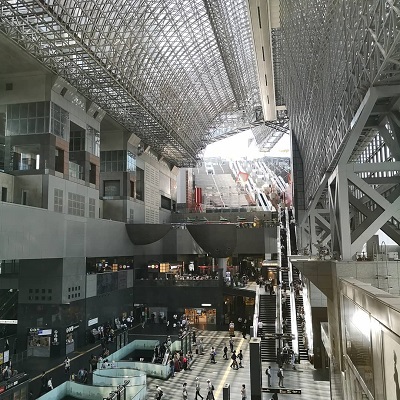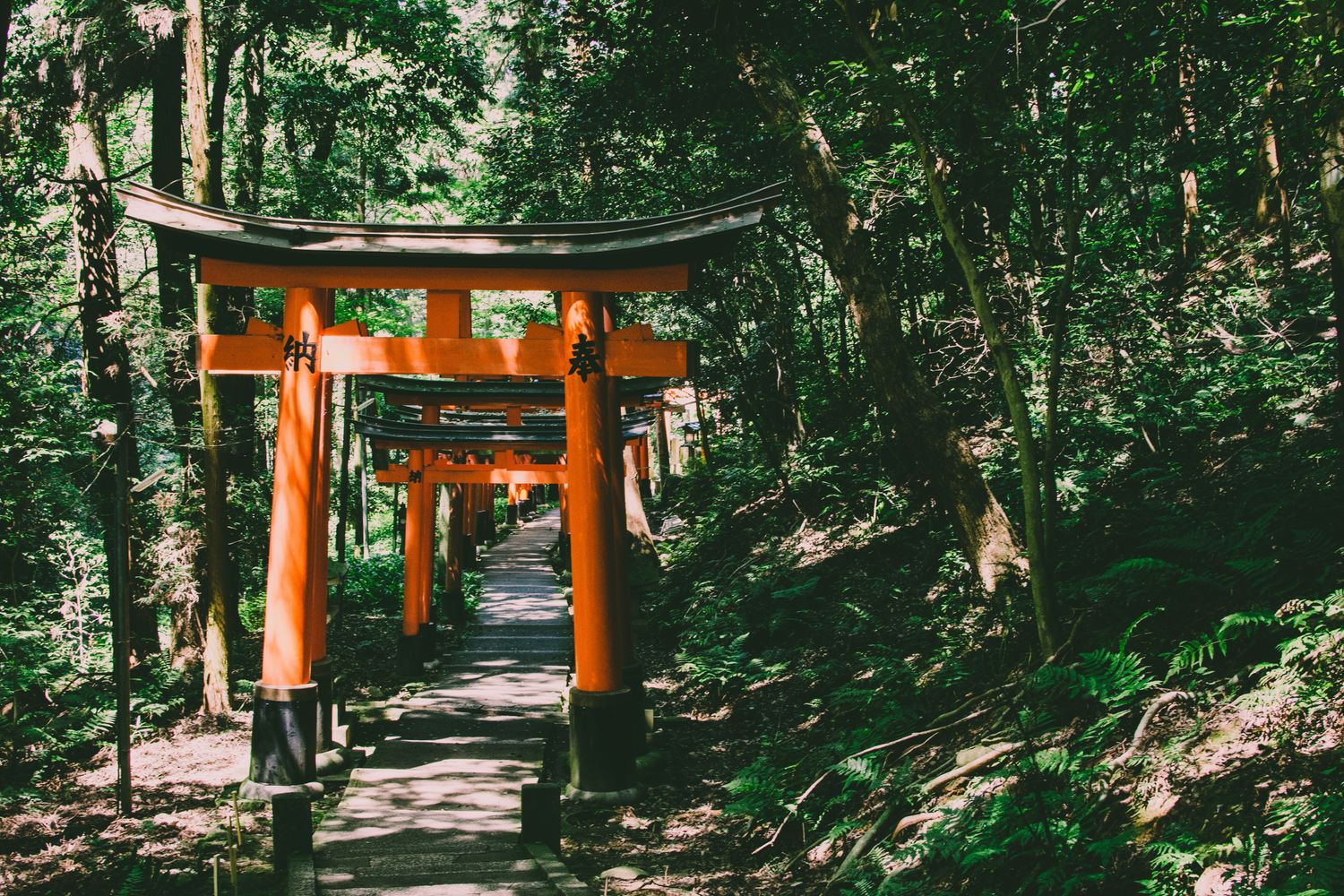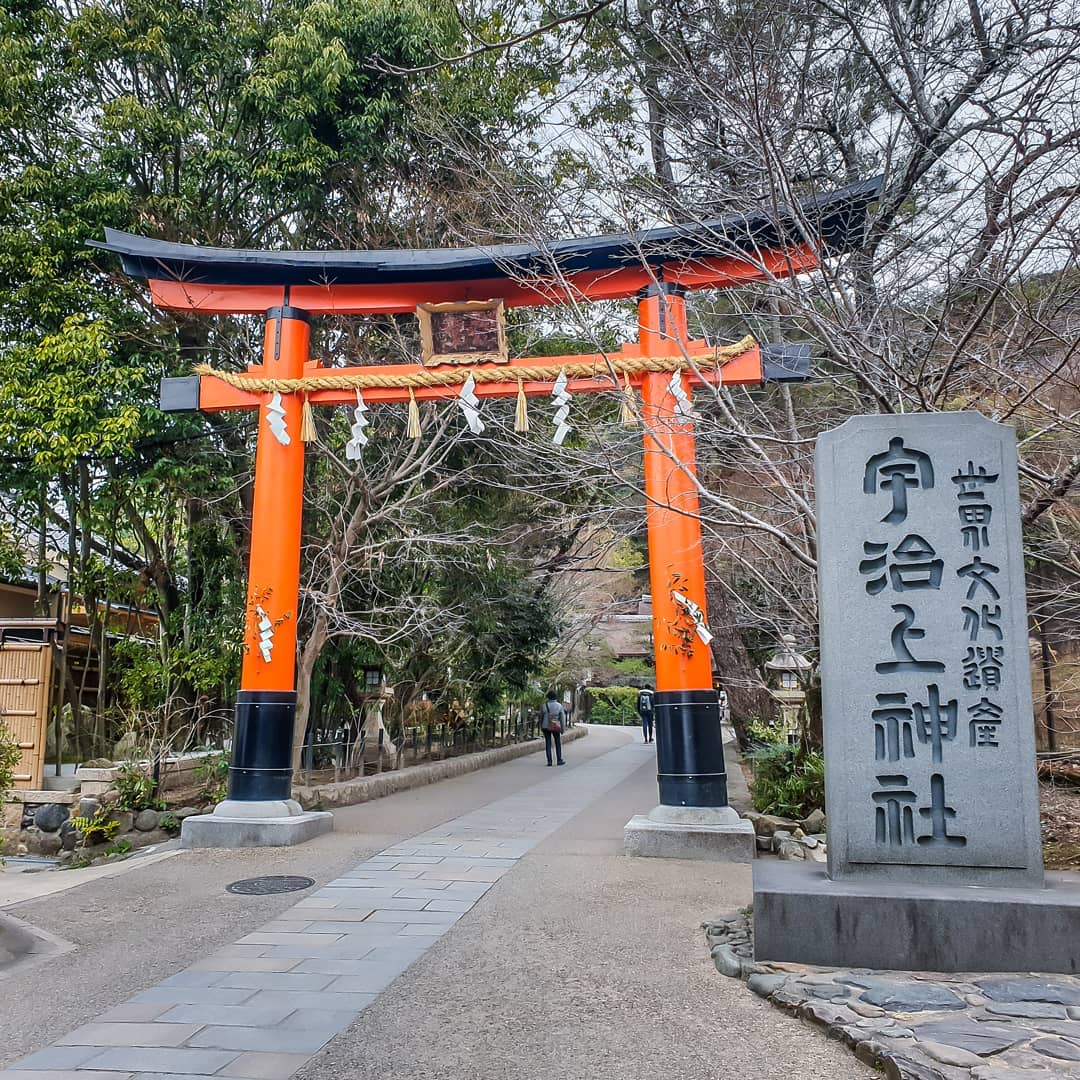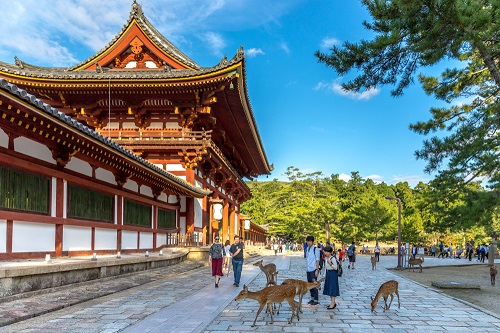[ad_1]
The JR Nara line runs between Kyoto and Nara, the 2 former Imperial capitals of Japan.
In AD 710, Nara was established as Japan’s first imperial capital. Buddhism was launched in Japan within the sixth century by way of the Silk Route via Central Asia, China and Korea. Later in 752, Nara’s Todaiji temple was constructed, and Buddhism grew to become the imperial courtroom’s faith. Today, Todaiji temple is one in every of Nara’s landmarks. Inside Todaiji temple, the Big Buddha Hall stays as world’s largest picket constructing.
In 784, the capital was moved from Nara to Nagaoka first, then in 794 to Kyoto. The emperor determined to vary the situation motive being he was trying to find an environment friendly water transportation routes and extra land for buildings. Also, with the rising affect of Buddhism, the emperor was mentioned to be cautious of the Buddhist clergy and courtiers in Nara.
Kyoto remained the Imperial seat till 1868 earlier than it was taken over by Tokyo (then referred to as Edo).
To uncover extra in regards to the significance of Nara and Kyoto, the 2 essential historic and cultural centres of Japan, hop on board the JR Nara line, starting on the futuristic station: Kyoto Station (Platform 8, 9, 10).
JR NARA Line’s Key Destinations—> Kyoto, Tofukuji, Inari, Uji, Nara (Approximately 50 minutes journey)
JR Kyoto Station
Photograph by gurenakaru on Instagram
The JR Nara Line departs from the hyper-modern JR Kyoto Station, a pointy distinction to Kyoto’s well-preserved historic panorama and abundance of nature. You can be significantly remiss when you didn’t spend at the least a day or two exploring this cultural centre of Japan that was miraculously spared from air raids and atomic bombs throughout World War 2. Still confused about what to see and do in Kyoto? Check out our 3D2N itinerary right here.
JR Tofukuji Station
Photograph by yongjay on Instagram
We are driving in direction of the southeastern aspect of Kyoto and our first cease is Tofukuji.
Check out the massive Zen temple, Tofukuji based in 1236 which is famend for its autumn colors which have captivated each locals and vacationers to its compound in the course of the fall season. Especially on the Tsutenkyo Bridge which is flanked by lush maple bushes, seems to be a mesmerising sight.
JR Inari Station
Photo by Jan Gottweiss on Unsplash
Next cease, we arrived at Inari Station. Home to eighth century Fushimi Inari Shrine, the place greater than 5,000 torii gates lead as much as the mountain. Every yr, practically 3 million sightseers snap the vermilion gates, precisely just like the one seen on these guidebooks!
Each torii gate is donated by an area enterprise that has been blessed by the Inari Shrine.
According to the Japanese, the torii gate is a portal to the sacred world, it’s a pathway for the gods, and one mustn’t stroll proper in the course of the best way.
By the best way, we’re midway to Nara!
JR Uji Station
Photograph by ashanywhere on Instagram
Before the prepare calls at Nara, we’ll cease at Uji, a small metropolis situated in between Kyoto and Nara. Fans of matcha can be aware of this title— Uji is among the first locations in Japan to begin cultivating inexperienced tea and is world-renowned for its superior brews and inexperienced tea noodles!
According to the locals, right here is the place you step again in time to witness the oldest surviving shrine in Japan, Ujigami Shrine, relationship to 1060.
JR Nara Station
At final, we arrived at Nara Station in lower than an hour! Nara was based in 710 by Empress Gemmei, and the traditional capital was modelled after China’s Tang dynasty of Chang’an, which was Japan’s window to the world throughout that period.
Glimpses of Japanese, Chinese and Korean influences could be seen from its artwork and structure in Nara. There’s Todaiji Temple, there’s Kasuga Taisha (probably the most revered Shinto shrine) and a museum of Buddhist artwork since Nara was the hub of Buddhism. But many vacationers would have informed you their agenda of visiting Nara is to be amongst the deers, the residents of Japan’s largest metropolis park – Nara-koen Park. According to Japanese folklore, the deers have roamed Nara for hundreds of years, and so they arrived in Japan even earlier than the Japanese crossed continental land bridges in the course of the Ice Age. Hence, the deers are seen as sacred animals believed to be the guardians of town.
The main sights could be lined on a day journey from Kyoto, however when you want to keep over for one evening, Nara has an affordable however restricted array of lodging, so make sure you e-book forward.







